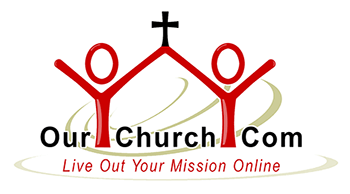When it comes to web design, I break things down into two areas: aesthetics (the way a site looks) and usability (the way a site functions). I’ll touch on usability issues in other posts, but for this post I want to focus on aesthetics.
This will also be the topic for this week’s #WebDesignChat Twitter chat Thursday at 3 PM Eastern time.
Here are 9 web design mistakes I see on a regular basis that make websites look bad.
1) Creating a design misrepresents the organization. The design of your site should express who you are as an organization. Serious business sites should not use childish images or grunge motifs. Children’s ministry sites should not look corporate. If the people in your church are all one ethnicity, don’t use multi-ethnic stock images. Don’t try to appear cooler, younger, or bigger than you are.
On the flip side, don’t settle for a website design that undermines who you are. If you’re great musician, don’t settle for a site that makes you look like a regular at karaoke night. If you’re a strong, growing church or business don’t settle for a site that looks like it was made by a high school intern.
This is probably not something you can evaluate well all by yourself. Ask people who know your organization well, “Do you think this website represents who we really are?
2) Using a theme/template that doesn’t match your logo. This happens a lot with organizations that use free templates or themes for their site. The end result is a site with a lot of different colors that don’t really go well together. Your logo colors should flow throughout the design of your site. This is one of the major benefits of having your site custom designed.
3) A site that is too narrow (or too wide). Once upon a time when computer monitors were 640×480, the rule of thumb was to design websites to be no more than 640 pixels wide. Now with much higher resolution screens anything under 960 pixels wide just looks old. On the other hand, there’s nothing more annoying than having to scroll left to right to read something, so don’t go too wide.
4) Using a busy background behind text. People should not have to strain to read a web page. There should be very little if any texture behind the text on a website and by all means, don’t use a picture behind your text. Make sure there is good contrast between the color of the text and the background.
The next 5 mistakes have more to do with website content than web design or themes, but I’m going to mention them because we’re talking about aesthetics. And after all, if a website looks bad nobody really care whether its because of a bad theme or bad content.
5) Using too many fonts & colors. No, using lots of different fonts and colors does not make you more creative. Nor does it help to emphasize the important parts of the page. It just makes it look busy, messy, and disjointed.
6) Pages that are too long. People don’t read web pages they skim, and the longer a page is the faster they skim. If you really want to put your 20 page manifesto online, break it into 20 separate pages (and use short paragraphs, headings and bullet points, but now we’re really getting into content issues).
7) Ugly, distracting ads. On-site ads are a viable business model for some blogs and news sites, but not for a church, school, ministry or business. The ads detract from the look of the site, compete with the message and lure visitors away. This goes for partnership/affiliate links and banners too. If providing visitors with links to additional resources is within the mission of your organization, its best to place them on a designated page or well designed area in a sidebar.
8) Animated GIFs. Enough said.
9) Blank/under construction pages. Blank pages look poor and frustrate visitors. “Under construction” messages and graphics are no better. All good websites are under perpetual construction and updated regularly.
Are any of these common aesthetic web design mistakes particularly annoying to you? Got any others to mention?


6 Comments
Both aesthetic and usability are both important to make your visitors will likely vote your site a useful website for them.
Yes, we'll look more usability issues as Web Design Month continues.
A tiny font that's too small to read is one of my pet peaves on web pages. Of course, you don't want a huge font, but it should be large enough to see on most laptops.
Great Post Thanks! Question about # 3 about not making the sites too narrow. Is there a rule of thumb in regard to not making it too wide so it can easily be viewed via mobile phone?
With regard to your page "Webb design mistakes", can I point out a mistake you have made of the right hand side. On the "Comprehensive Webb Soloutions for Christians" 2nd page reads, Webb Hosting,Custom Webb Design and " SEACH Marketing". I can see that this is probably a common mistake or is it a clever way to attract attention?
Either way,thanks for your e-mails over the last few years. Will contact you soon re a webb site for our Company. God Bless.
As usual, very helpful. Thanks Paul.